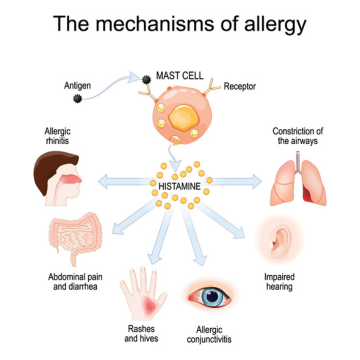Understanding Allergies: Causes, Symptoms, and Treatment Options
Allergies are a common health concern that affect millions of people worldwide. Whether triggered by pollen, pet dander, or food, allergies occur when the immune system overreacts to a substance that is typically harmless. Understanding allergies and how to manage them is crucial for living a healthy and comfortable life. In this blog, we will explore the causes, symptoms, and treatment options for allergies. What Are Allergies? Allergies happen when the immune system mistakenly identifies a harmless substance, known as an allergen, as a threat. In response, the body releases chemicals, such as histamine, that cause symptoms like sneezing, itching, or swelling. These reactions can range from mild to severe, depending on the individual and the allergen involved. Common Causes of Allergies Allergic reactions can be triggered by a wide range of substances, including: Pollen – One of the most common allergens, especially during spring and fall, pollen from trees, grasses, and weeds can cause hay fever. Dust Mites – These tiny creatures live in bedding, upholstery, and carpets, and their waste can trigger allergic reactions. Pet Dander – Proteins found in animal saliva, skin cells, and urine can cause reactions in sensitive individuals. Food Allergens – Common food allergens include peanuts, tree nuts, eggs, milk, shellfish, and soy. Severe reactions to food allergens can lead to life-threatening anaphylaxis. Insect Stings – Bee or wasp stings can cause severe allergic reactions in some people. Mold – Mold spores in damp environments can trigger allergic responses in those with mold sensitivities. Medications – Some individuals may experience allergic reactions to specific medications, including antibiotics and pain relievers. Symptoms of Allergies The symptoms of allergies can vary depending on the allergen and the individual. Some common symptoms include: Sneezing and a runny or stuffy nose (allergic rhinitis) Itchy eyes, nose, or throat Coughing, wheezing, or shortness of breath (in cases of asthma) Skin rashes or hives Swelling in certain areas, especially the face, throat, or mouth Digestive issues like vomiting, cramps, or diarrhea (in food allergies) In severe cases, allergies can cause anaphylaxis, a life-threatening condition that requires immediate medical attention. Treatment and Management of Allergies While there is no cure for allergies, several treatments can help manage symptoms and prevent allergic reactions. Avoidance – The best way to prevent an allergic reaction is to avoid the allergen. For example, staying indoors during pollen season or using dust mite-proof bedding can reduce exposure to common allergens. Medications – Antihistamines, decongestants, and nasal sprays can provide relief from mild allergic reactions. In some cases, corticosteroids or epinephrine (for severe reactions) may be prescribed. Allergy Shots (Immunotherapy) – This long-term treatment involves receiving small doses of the allergen to build up tolerance over time. It is often effective for pollen, dust mites, and insect allergies. Lifestyle Adjustments – Keeping the home clean, using air purifiers, and maintaining a healthy diet can help reduce allergic reactions. People with food allergies should always read labels carefully and carry an epinephrine auto-injector if necessary. Emergency Response – For severe allergies, particularly food allergies, carrying emergency medication (like epinephrine) and knowing how to use it can save lives.
